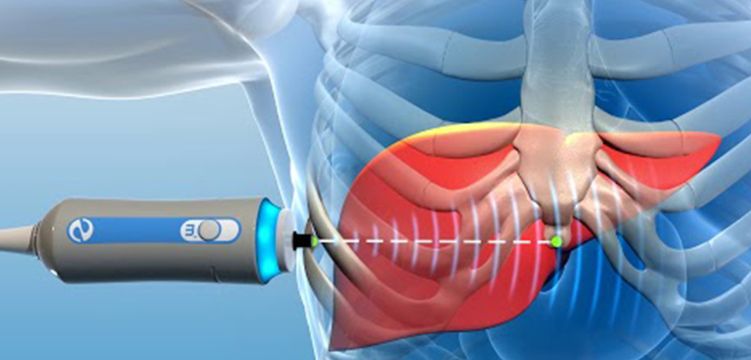Fibroscan for Fatty Liver disease
FibroScan is a special non-invasive ultrasound technology that measures liver stiffness (hardness) and fatty changes in the liver. These measurements give better information about the condition of liver compared to the usual ultrasonography test.
What is Fibroscan?
Fibroscan is a test performed by ultrasound like probe and used for measurement of liver fibrosis.Who should go for Fibroscan?

About Your CAP score
Your doctor will use your CAP score to find out your steatosis grade. Your CAP score is measured in decibels per meter (dB/m). This score will range from 100 dB/m to 400 dB/m. Your CAP score and steatosis grade can go up or down over time.The following table shows ranges of CAP scores, and the matching steatosis grades. It shows how much of your liver is affected by fat build up. Normal livers can have up to 5% of fatty changes in them. A score below 238 dB/m means the amount of fatty change in your liver is not higher than normal.

About Your Liver Stiffness Result
Your liver stiffness result is measured in kilopascals (kPa). Normal results are usually between 2 and 7 kPa. Your result may be higher than the normal range if you have liver disease. The highest possible result is 75 kPa.
Using Your Liver Stiffness Result to Find Your Fibrosis Score
Your healthcare provider will use your liver stiffness result and medical history to find out your fibrosis score. Your results can range from normal to advanced.Based on these 2 parameters, the doctor can get a complete information about health of your liver and can diagnose many different conditions related to liver. This information can be extremely useful in planning treatment for a particular patient.